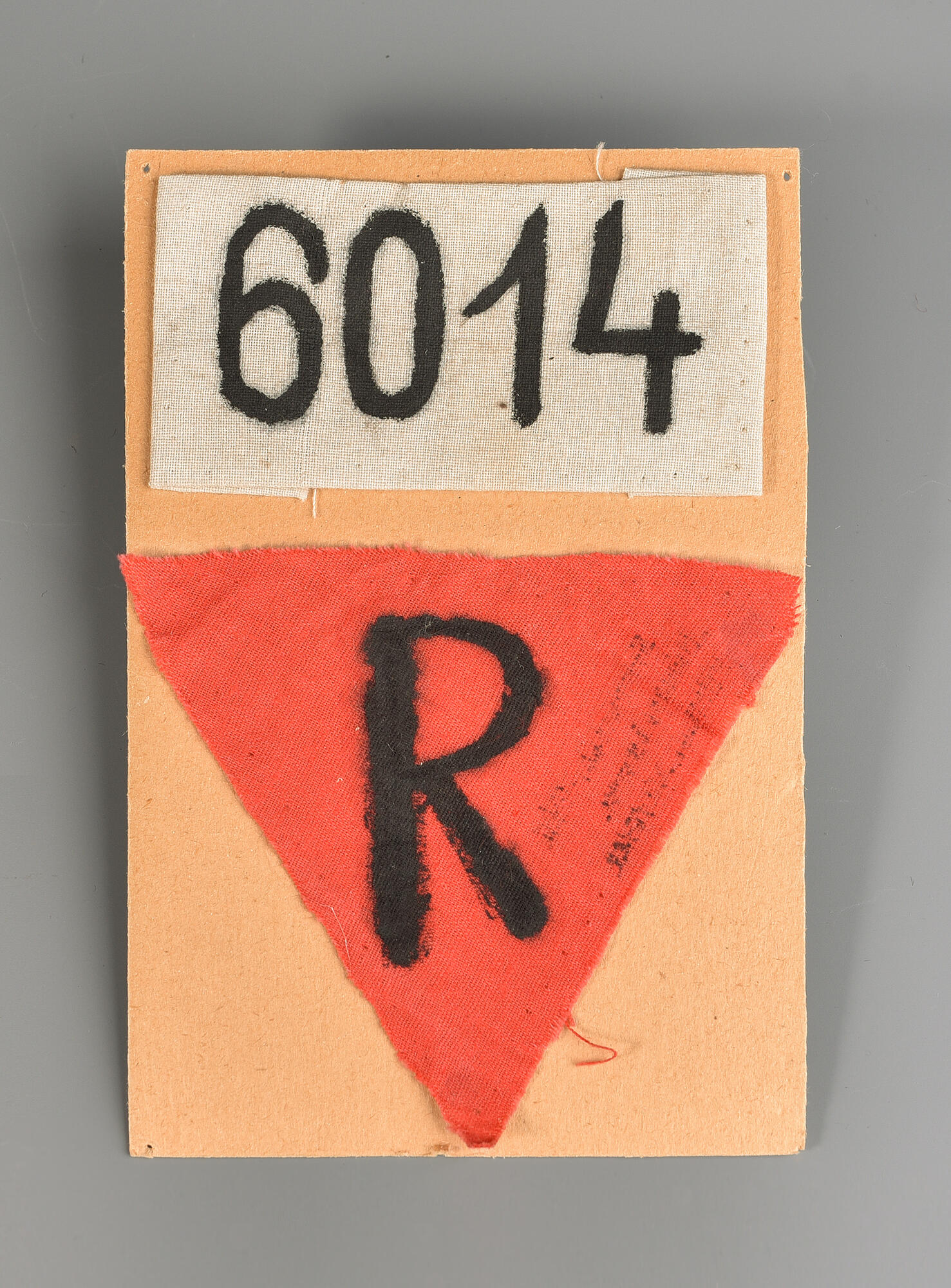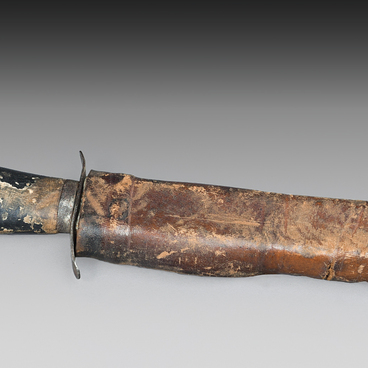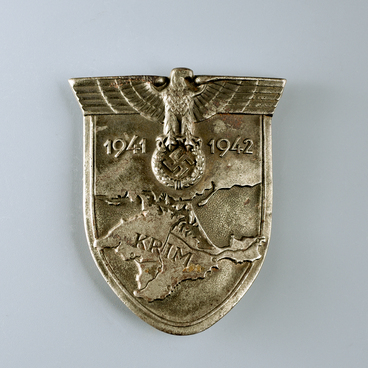In the concentration camps of Hitler’s Germany there was a clear system of marking prisoners. As a rule, all the patches on the uniforms were made in the shape of an inverted triangle. An exception was made for the Jews, who had two triangles sewn on their clothes in such a way that they resembled the Star of David. These triangles were often called winkels from the German ‘Winkel’ for ‘corner’.
The patch color meant the status of the prisoner. Red triangles were assigned to communists, liberals, social democrats, Massons, or anarchists. Black ‘winkels’ were assigned to the feeble-minded, the insane, pimps, alcoholics, homeless, beggars, truants, and pacifists. The red inverted triangle was sewn on the uniforms of spies, deserters, and prisoners of war. Green was for criminals, purple for Jehovah’s Witnesses and Seventh Day Adventists, blue for migrants, and brown for gypsies.
The patch shown in the exhibition belonged to prisoner V. Azarov (his name has not survived), who served time in a concentration camp from August 1942 to April 1945.
Buchenwald was one of the largest concentration camp complexes organized by the Nazis. This camp appeared in July 1937. Conditions at the camp were brutal: a fence with live barbed wire, guard towers and chains of guards with machine guns. The SS often shot prisoners in the stables; on other occasions, prisoners were hanged on the crematorium grounds.
Initially the camp housed mainly political prisoners. In November 1938, after Kristallnacht, a wave of anti-Jewish pogroms, the German SS and police forces sent nearly 10,000 Jewish men to Buchenwald. In the last years of the camp’s existence, the Nazis sent prisoners of war from various countries, resistance fighters, and former statesmen to the camp.
On April 11, 1945, as American troops approached Buchenwald, an uprising broke out there that resulted in the prisoners being able to seize control of the camp from the retreating SS units. In commemoration of this event, the International Day of the Liberation of Nazi Concentration Camps was established. In 1958, the Buchenwald Memorial Complex was founded on the grounds of the camp.
The patch color meant the status of the prisoner. Red triangles were assigned to communists, liberals, social democrats, Massons, or anarchists. Black ‘winkels’ were assigned to the feeble-minded, the insane, pimps, alcoholics, homeless, beggars, truants, and pacifists. The red inverted triangle was sewn on the uniforms of spies, deserters, and prisoners of war. Green was for criminals, purple for Jehovah’s Witnesses and Seventh Day Adventists, blue for migrants, and brown for gypsies.
The patch shown in the exhibition belonged to prisoner V. Azarov (his name has not survived), who served time in a concentration camp from August 1942 to April 1945.
Buchenwald was one of the largest concentration camp complexes organized by the Nazis. This camp appeared in July 1937. Conditions at the camp were brutal: a fence with live barbed wire, guard towers and chains of guards with machine guns. The SS often shot prisoners in the stables; on other occasions, prisoners were hanged on the crematorium grounds.
Initially the camp housed mainly political prisoners. In November 1938, after Kristallnacht, a wave of anti-Jewish pogroms, the German SS and police forces sent nearly 10,000 Jewish men to Buchenwald. In the last years of the camp’s existence, the Nazis sent prisoners of war from various countries, resistance fighters, and former statesmen to the camp.
On April 11, 1945, as American troops approached Buchenwald, an uprising broke out there that resulted in the prisoners being able to seize control of the camp from the retreating SS units. In commemoration of this event, the International Day of the Liberation of Nazi Concentration Camps was established. In 1958, the Buchenwald Memorial Complex was founded on the grounds of the camp.



